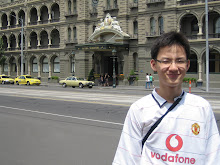These pages give a brief over view of the History of Scouting and some of the changes that have happened to the movement over its history, this is viewed mainly from a British perspective. More details can be found on related pages.
The birth of an idea

Baden-Powell returned to England a national hero, after defending the town of Mafeking (Mafikeng as it is now spelled) for seven months from the besieging Boer troops, the first real British triumph in the Boer War. When he returned to England, he discovered that many boys and young men were avidly reading his book Aids to Scouting. This book was intended as a military training manual, teaching soldiers techniques such as observation, tracking, initiative...

B-P. met with various influential people in youth movements across the country, and was persuaded to write a version of Aids to Scouting aimed at teenage boys, Scouting for Boys was published in 1908 (after a camp on Brownsea Island, Poole Harbour, Dorset, where B-P. tried out his ideas on four patrols of boys from London and Bournemouth). Scouting for Boys was initially printed in six fortnightly parts, and sold very quickly.
Baden-Powell had originally intended the scheme outlined in Scouting for Boys to supplement the programmes of youth organisations that were in existence at the time, like the Boys Brigade and the Boy's Clubs. But boys not in other youth movements bought the book, and set themselves up as Patrols of Scouts, and quickly found themselves leaders to train them. It was soon realised that some form of organisation was required to support these Scouts.
Scouting for Boys is now in fourth place in the all time best sellers list, behind the Bible, the Koran and Mao-Tse-Tung's Little Red Book
The start of a movement

It is a movement, because it moves forward. As soon as it stops moving, it becomes an Organisation, and is no longer Scouting. -- B-P.
At the out-set the one thing Scouting could not be called was an Organisation, as it was far from organised. B-P. was still an active soldier, organising the Territorials in Northumberland, which kept him far from the hub of Scouting in London. The initial rush for membership was handled by Messers C. Arthur Pearson & Co., the publisher of Scouting for Boys and many of the subsequent Scouting publications, and the newly published Scout magazine.
It was soon seen that some break from the publisher would have to be achieved to get the Movement the status it deserved. The Movement slowly evolved, being very democratic at the grass-roots level, with the Scout Leaders having a fairly free reign with what they did, as long as it was within the ideals of Scouting.
The next year the Scout Association opened its first offices in Victoria Road, finally breaking the strong bonds it had with Pearsons. In 1910 B-P. retired from the Army to devote his time, effort and money (all his royalties from Scouting for Boys were ploughed back into the movement) into Scouting. This year also saw the first census of Scouts in the UK, indicated over a hundred thousand Scouts in the UK. So, in less than three years, Scouting had a firm footing.
Expanding horizons

As early as 1908 Scouting was starting in many of the British outposts of the Empire. After a trip to South America, Scouting started in Chile, and it was already crossing the channel into Europe. The big step across the Atlantic, and into the United States came more by chance. In 1909, an American business man, William Boyce, was lost in the fog of London, when a small boy approached him, and offered to take him to his hotel. Once there, the boy refused any offer of money for the service, saying that it was his good turn as a Boy Scout. Joyce was intrigued by this and tracked down B-P. before he left London to discover more of this. When he got back to the U.S.A. he went about setting up the Boy Scouts of America. By 1918, its numbers had risen to 300,000, and had reached the million mark before the end of the twenties.
B-P. spent much of the rest of his life on World-tours, initially organising Scouting throughout the world, and later attending the World Jamborees, which have become an integral part of international Scouting. The first of these was in 1920 in London, at Olympia, it was more an exhibition of Scouting, held inside. The second Jamboree, four years later, in Copenhagen, set the model for the modern Jamboree, a major international camp for Scouts from all over the World.

Scouting now has twenty-five million members world-wide (not counting Guides and Girl Scouts) and is still growing. Approximately four million of those are from the United States, the largest single Scout Association.
The World Association of Girl Guides and Girl Scouts (WAGGGS) has another nine-million members, making it the world's second largest youth organisation, behind Scouts.




1 comment:
Wah!So long!
Post a Comment